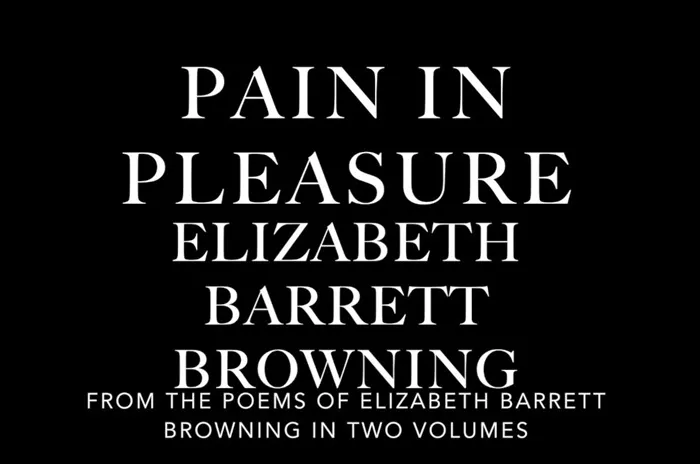Welcome to Poem of the Day – Pain in Pleasure by Elizabeth Barrett Browning.
“Pain in Pleasure” is one of Elizabeth Barrett Browning’s most poignant and thought-provoking poems. Known for her deep emotional insight and poetic mastery, Browning explores complex themes of love, sorrow, and the dual nature of human experience. The poem delves into the paradox of how pleasure and pain often coexist, and how one can enhance the understanding of the other. In this article, we will examine the poem’s structure, its central themes, and the meaning behind its lines, offering a detailed explanation of the poem’s profound ideas.
Pain in Pleasure Poem
A THOUGHT ay like a flower upon mine heart,
And drew around it other thoughts like bees
For multitude and thirst of sweetnesses;
Whereat rejoicing, I desired the art
Of the Greek whistler, who to wharf and mart
Could lure those insect swarms from orange-trees
That I might hive with me such thoughts and please
My soul so, always. foolish counterpart
Of a weak man’s vain wishes ! While I spoke,
The thought I called a flower grew nettle-rough
The thoughts, called bees, stung me to festering:
Oh, entertain (cried Reason as she woke)
Your best and gladdest thoughts but long enough,
And they will all prove sad enough to sting !
Pain in Pleasure Explanation
Overview of the Poem
“Pain in Pleasure” consists of a few short stanzas, each carefully constructed to convey the tension between joy and sorrow. Browning uses vivid imagery and emotional language to express her reflections on human experiences. The central theme of the poem is the idea that pleasure and pain are inseparable, existing in a delicate balance that shapes human emotions. Through this exploration, Browning encourages readers to consider how these two forces influence each other and coexist in the human heart.
The Theme of Duality
At the heart of “Pain in Pleasure” is the concept of duality. Browning suggests that pleasure and pain are two sides of the same coin, each defining and enhancing the other. The poem opens with the notion that pleasure can often bring pain. This may seem paradoxical, but Browning suggests that without one, the other would lose its meaning. In her view, happiness is more profound when one has known sorrow, and sorrow is more bearable when it is tempered by moments of joy.
The Language of Sorrow and Joy
Browning’s choice of language highlights the emotional complexity of the poem. Words like “tears” and “anguish” evoke sorrow, while “laughter” and “brightness” suggest happiness. Yet, Browning doesn’t present these emotions in isolation. Instead, she intertwines them, showing that they often exist together in our most meaningful experiences. For example, moments of intense love or passion are often laced with the awareness that such moments are fleeting, bringing a sense of pain as much as pleasure.
Exploring Human Experience
The poem reflects Browning’s deep understanding of the human condition. She captures the emotional truth that life is not simply black or white, but filled with complexities and contradictions. The poet doesn’t just lament the pain that comes with pleasure, but rather suggests that these feelings are essential to a full experience of life. The presence of pain in pleasure gives depth and significance to our emotional states, as it allows us to appreciate the fleeting nature of happiness and cherish the moments of joy that come our way.
The Role of Love
Love plays a significant role in “Pain in Pleasure,” serving as the vehicle through which Browning examines the interplay of these emotions. In the context of love, pleasure often brings a sense of vulnerability, as the possibility of loss or disappointment looms. Yet, this vulnerability is part of what makes love so powerful and meaningful. Browning’s insight suggests that love, while capable of causing pain, also offers the most profound pleasures, and it is the contrast between the two that gives it its intensity.
Conclusion
In “Pain in Pleasure,” Elizabeth Barrett Browning offers a nuanced view of the human emotional experience. She beautifully illustrates how pleasure and pain are not opposing forces, but complementary ones. By exploring this duality, Browning invites us to reflect on how our joys and sorrows shape who we are. The poem is a timeless reminder that the most meaningful experiences in life often arise from the balance of opposites, where pain and pleasure coexist, creating a richer, more complex understanding of our emotional world.

